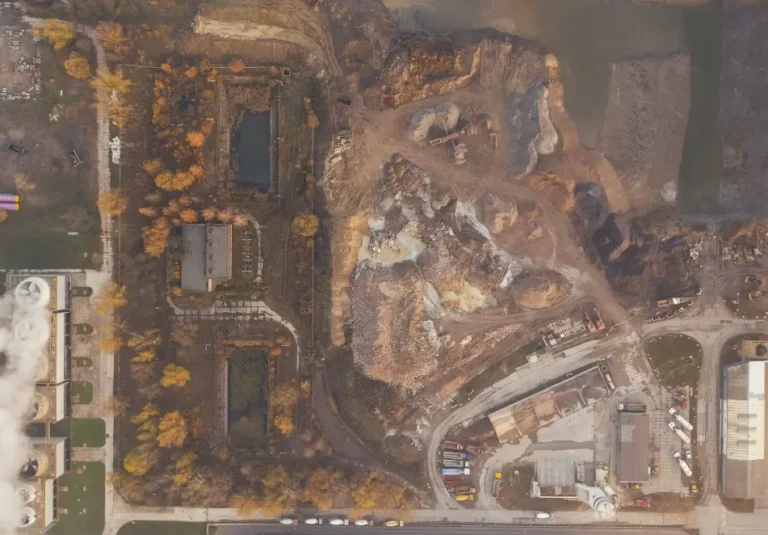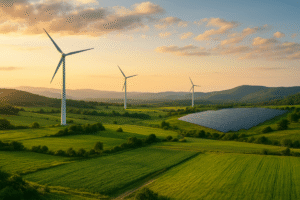The most priceless gift that living beings have been presented with is nature. It is only by the grace of nature that life is possible on planet Earth. Living beings are amply dependent on the environment around them for survival. Our actions directly affect the environment, and whether we want or not, consequences are bound to come.
Human beings are greatly responsible for the extra amount of methane in the atmosphere. Frequent burning of some natural resources and a few other activities lead to the emission of methane gas that causes huge damage to our environment. Methane pollution is a threat to our environment, and we must understand why and how to help it.
Table of Contents
What exactly is methane?
Before talking about methane pollution, it’s necessary to know it in detail. The chemical formula of methane is CH4. It is a hydrocarbon that is considered the main component of natural gas.
Interestingly, methane is also a greenhouse gas (GHG). The presence of methane in the atmosphere directly influences the temperature of Earth and affects the climate. The gas is generally emitted from natural resources and from a wide variety of anthropogenic resources. Anthropogenic resources are man-made or artificial resources.
The chemical formula of methane is CH4. Its molar mass is 16.04 g/mol. Its boiling point is -161.6° Celsius, and its melting point is -182° Celsius.
How is methane emitted?
To understand how methane pollution comes into play, one must understand how it is emitted. Methane is generally emitted when oil, natural gas, and coal are produced and transported. Not only these, but methane emission also happens due to a few other reasons.
Various agricultural practices, livestock, land use, and decaying of organic waste result in the emission of methane. Usually, the decaying of waste materials in municipal solid waste landfills emits a lot of methane gas. The incomplete combustion of a few things like woodlands, savannas, and other agricultural wastes leads to the emission of methane.
Wastewater treatment, mobile combustion, coal mining, and specific industrial processes emit methane gas. As a matter of fact, China, India, Russia, Brazil, and the United States are the highest methane emitters in the world.
Read also: The 5 major carbon emitting and polluting industries worldwide
How does it cause harm?
After we know all about methane, it’s high time to discuss methane pollution. Methane can be a harmful gas due to its hostile environmental effects. Let’s talk about them one by one.
A very high level of methane gas, if present in the atmosphere, can reduce the level of oxygen from the air that we breathe to stay alive. This can harm human beings. It causes mood swings, slurred speech, memory loss, vision issues, vomiting, nausea, headache, and facial flushing.
In some cases, it may also lead to changes in heart rate, breathing problems, numbness, balance issues, and unconsciousness. Methane is also highly responsible for the formation of ground-level ozone, which is a catastrophic air pollutant. This is so hazardous that it causes almost 1 million premature deaths per year.
Methane’s structure is such that it can trap more heat in the atmosphere than carbon dioxide. This makes methane almost 80 times more harmful than carbon dioxide. The most dangerous effect of methane pollution can be seen as its contribution to global warming.
Due to its heat-absorbing capability, it increases the average temperature of the planet, which results in the melting down of glaciers and ice slabs.
Mitigation and reduction strategies
The first and basic measure we can take to reduce methane pollution is eating plant-based products. This will directly reduce livestock farming. The government should ensure methane detection technology to check and stabilize the methane emissions from various facilities.
Zero routine flaring is a step toward reducing methane emissions by 2030. Any methane emission linked with flare will experience a deterioration in this process. Using renewable sources of energy is a good way to reduce methane emissions. Purchasing carbon offsets and solar panels for homes is also a positive approach to stopping methane pollution.
All countries can reduce methane pollution by eliminating routine venting and flaring and repairing leaks during fossil production. Farmers can feed more nutritious diets to the farm animals to reduce methane emissions. Change in agricultural approach can be a good way to limit methane pollution.
Mother Earth is already facing a lot of problems because human beings are selfish. Methane pollution is one of the consequences of our selfish activities. Rectifying it is the first obligation. Global warming and atmospheric pollution are the results of high amounts of methane in the environment.
Human beings can maintain the ecological balance by taking certain steps to reduce methane emissions and finding alternate ways to do the work. These precautionary steps will also benefit the food web.
Methane is a greenhouse gas, and hence it is important to keep it in control. If the amount of methane in the environment goes berserk, Earth will become a hell for living beings.
Read more: Without intensive livestock farming, CO2 pollution would be reduced by 68%












